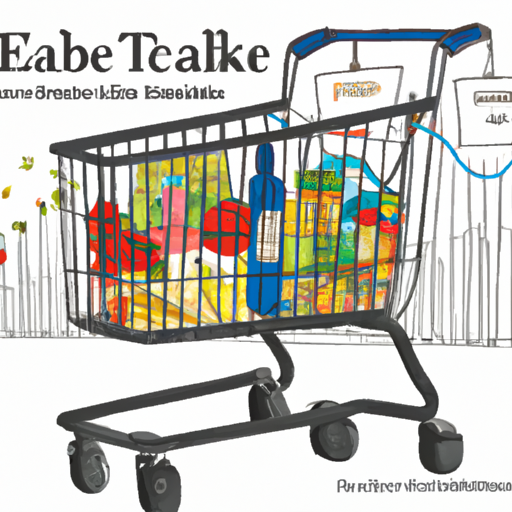Market Basket Analysis
So you’ve probably heard of market research, where businesses study consumer behavior to understand their preferences and buying patterns. But have you ever heard of market basket analysis? This technique takes it a step further by analyzing the correlation between different products that customers purchase together. By delving into these associations, businesses can identify cross-selling opportunities, optimize product placement, and even personalize recommendations for individual customers. Market basket analysis is like peering into the minds of shoppers and uncovering hidden patterns that can revolutionize the way businesses operate.
Table of Contents
I. Definition of Market Basket Analysis
A. What is market basket analysis?
Market basket analysis is a technique used in data mining and analytic reporting to discover associations between products that are frequently purchased together by customers. It is also known as affinity analysis or association analysis. By examining transactional data, market basket analysis seeks to identify patterns and relationships between items that can be used to make business decisions, such as product placement, cross-selling, and targeted marketing strategies.
B. Purpose of market basket analysis
The main purpose of market basket analysis is to understand the relationships and associations between products in order to gain insights into customer behavior and preferences. By identifying which items are frequently purchased together, businesses can optimize their strategies in various ways. For example, they can improve store layout and product placement, create targeted promotions and discounts, and enhance their cross-selling and upselling techniques.
C. Benefits of market basket analysis
Market basket analysis provides several benefits to businesses. Firstly, it helps increase sales and revenue by leveraging the insights gained from the analysis. By understanding the associations between products, businesses can optimize their cross-selling and upselling strategies, leading to increased purchase frequency and higher average order values. Additionally, market basket analysis enables businesses to personalize recommendations, improving customer satisfaction and loyalty. Furthermore, it helps with inventory management by identifying co-occurring items and ensuring efficient stock management.
II. Key Concepts of Market Basket Analysis
A. Transactions and items
In market basket analysis, transactions refer to individual purchases made by customers. Each transaction consists of one or more items that were purchased together. These items can be physical products, services, or any other unit of sale. It is essential to define and organize transactions and items properly for effective market basket analysis.
B. Support
Support refers to the frequency with which a particular item or set of items appears in all the transactions. It reflects the popularity of an item or itemset within the dataset. Support is typically measured as the proportion of transactions that contain the item or itemset.
C. Confidence
Confidence is a measure of how often an association between two items or itemsets is observed in the dataset. It measures the conditional probability of finding items X and Y together, given that item X occurs. Confidence is calculated by dividing the support of the itemset by the support of item X.
D. Lift
Lift is a statistical measure that indicates the strength and significance of an association between two items or itemsets. It compares the observed frequency of co-occurrence to the expected frequency if the items were independent of each other. Lift values greater than 1 indicate positive associations, while values less than 1 indicate negative associations.
E. Association rules
Association rules are the output of market basket analysis. They represent the relationships and associations between items or itemsets based on their support, confidence, and lift. An association rule consists of an antecedent and a consequent, where the antecedent represents the items that occur before the consequent in a transaction, and the consequent represents the items that occur after the antecedent. Association rules are commonly expressed in the form of “if antecedent then consequent.”
III. Steps in Market Basket Analysis
A. Data collection and preprocessing
The first step in market basket analysis is to gather transactional data, which typically includes information such as customer IDs and the items purchased in each transaction. To prepare the data for analysis, it is essential to clean, transform, and preprocess it. This may involve removing duplicates, handling missing values, and organizing the data into a suitable format for analysis.
B. Itemset generation
Once the data is preprocessed, the next step is to generate itemsets. An itemset is a collection of items that appear together in a transaction. Itemsets can be of different sizes, ranging from single items to combinations of multiple items. Common techniques for generating itemsets include the Apriori algorithm, FP-growth algorithm, and Eclat algorithm.
C. Rule generation
After generating itemsets, the next step is to generate rules based on the itemsets. Association rules are created by identifying frequent itemsets and computing the support, confidence, and lift values for each rule. The rules with high support, confidence, and lift are considered strong associations. It is also possible to set thresholds for these metrics to filter out less significant rules.
D. Rule evaluation
Once the rules are generated, they need to be evaluated to determine their usefulness and relevance. Rule evaluation involves analyzing the generated rules based on various criteria, such as business objectives, domain knowledge, and evaluation metrics. The evaluation process helps identify the most impactful rules that can be utilized to make informed business decisions.
IV. Techniques for Market Basket Analysis
A. Apriori algorithm
The Apriori algorithm is one of the most commonly used techniques for market basket analysis. It employs a breadth-first search strategy to discover frequent itemsets by iteratively pruning infrequent itemsets. The algorithm uses the concepts of support, confidence, and lift to identify strong association rules.
B. FP-growth algorithm
The FP-growth algorithm is an alternative technique for market basket analysis that uses a tree-based data structure called the FP-tree. It efficiently mines frequent itemsets by compressing transactional data and exploiting the concept of conditional pattern bases. The FP-growth algorithm is particularly useful for large datasets as it eliminates the need for explicit candidate itemset generation.
C. Eclat algorithm
The Eclat algorithm is another popular technique for market basket analysis. It stands for Equivalence Class Transformation. The Eclat algorithm mines frequent itemsets using a depth-first search strategy, combined with vertical data format representation. It is known for its simplicity and efficiency in discovering frequent itemsets without generating explicit itemset combinations.
V. Applications of Market Basket Analysis
A. Retail sector
In the retail sector, market basket analysis plays a crucial role in optimizing store layouts, product placements, and product recommendations. By identifying frequently co-purchased items, retailers can strategically position related products together, enhancing cross-selling opportunities.
B. E-commerce
In e-commerce, market basket analysis is used to improve product recommendations and personalize the online shopping experience. By analyzing customer purchase behavior, e-commerce platforms can offer relevant and personalized product recommendations to increase conversion rates and customer satisfaction.
C. Online recommendation systems
Market basket analysis is widely used in online recommendation systems, such as those used by streaming platforms and online news portals. By identifying associations between user preferences and consumption patterns, these systems can make personalized recommendations, enhancing user engagement and loyalty.
D. Customer segmentation
Market basket analysis helps in customer segmentation by identifying distinct groups of customers based on their purchasing patterns. By understanding the preferences and behaviors of different customer segments, businesses can tailor their marketing strategies and offerings to effectively target each segment.
VI. Challenges in Market Basket Analysis
A. Data quality issues
Market basket analysis heavily relies on transactional data, which can be prone to data quality issues such as missing values, inconsistent formats, and erroneous entries. Cleaning and preprocessing the data is crucial to ensure accurate and reliable analysis results.
B. Scalability
As the size of transactional data increases, the scalability of market basket analysis techniques becomes a challenge. Traditional algorithms may struggle to handle large datasets efficiently, requiring specialized algorithms and distributed computing frameworks.
C. Privacy concerns
Market basket analysis involves analyzing customer behavior by examining their transactional data. This raises privacy concerns as customers may be wary of their personal information being used for targeted marketing or data-driven decision making. Businesses must ensure data security and comply with privacy regulations to maintain customer trust.
VII. Successful Case Studies
A. Walmart’s usage of market basket analysis
Walmart, one of the largest retail chains globally, utilizes market basket analysis to drive sales and improve customer experience. By analyzing transactional data, Walmart identifies items that are frequently bought together and optimizes product placements accordingly. This strategic approach has led to increased sales and enhanced customer satisfaction.
B. Amazon’s recommendation system
Amazon, the e-commerce giant, leverages market basket analysis to power its product recommendation engine. Using data from millions of transactions, Amazon identifies patterns and associations between products to offer personalized recommendations to its customers. This has contributed to Amazon’s success as a leading e-commerce platform.
C. Netflix’s movie recommendations
Netflix, the popular streaming platform, employs market basket analysis techniques to enhance its movie recommendation system. By analyzing user viewing habits and transactional data, Netflix identifies associations between movies and suggests relevant titles to its subscribers. This personalized recommendation approach has greatly improved user engagement and satisfaction.
VIII. Limitations of Market Basket Analysis
A. Limited to transactional data
Market basket analysis relies solely on transactional data and does not consider other forms of data, such as demographic information or user preferences. This limitation restricts the scope of insights that can be derived from the analysis.
B. Lack of contextual information
Market basket analysis only captures associations between items and does not consider the context in which the transactions occur. For example, it does not account for the time of day, seasonality, or location, which may impact purchasing behavior.
C. Inability to consider temporal aspects
Market basket analysis focuses on identifying associations between items but does not capture temporal information. It cannot determine the order in which items are purchased or explore the change in customer preferences over time, potentially limiting its ability to provide in-depth insights.
IX. Future Trends in Market Basket Analysis
A. Integration with machine learning techniques
The future of market basket analysis lies in the integration with advanced machine learning techniques. By combining market basket analysis with methods such as deep learning and reinforcement learning, businesses can gain deeper insights into customer behavior and make more accurate predictions and recommendations.
B. Real-time analysis
As businesses strive to provide instant personalized recommendations and respond to changing customer preferences promptly, real-time market basket analysis will become more important. Analyzing transactional data in real-time will enable businesses to adapt their strategies in the moment and provide a seamless customer experience.
C. Personalized recommendations
Personalization will continue to be a key focus in market basket analysis. By leveraging techniques such as collaborative filtering and content-based filtering, businesses can tailor recommendations to individual customers based on their preferences, behavior, and historical purchases.
X. Conclusion
Market basket analysis is a powerful technique that enables businesses to uncover hidden patterns and associations in transactional data. By understanding the relationships between items, businesses can optimize their strategies in various sectors such as retail, e-commerce, and recommendation systems. While market basket analysis has its limitations, advancements in machine learning and real-time analysis will further enhance its capabilities in the future. With its ability to drive sales, improve customer satisfaction, and personalize recommendations, market basket analysis remains a valuable tool for businesses seeking to gain a competitive edge in today’s data-driven world.






